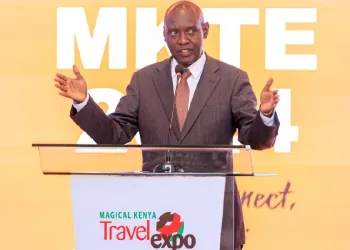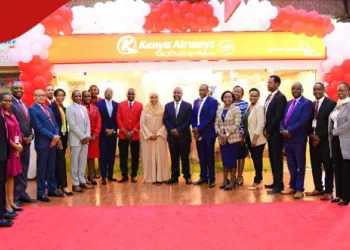The Narok County Government has implemented a prohibition on private vehicles within the renowned Maasai Mara National Game Reserve, as announced by Chief Park Administrator Alex Nabaala in a memo addressed to all entry gates. The new directive restricts access to the reserve to select safari vehicles only.
“In accordance with the Maasai Mara Management Plan, we have prohibited the use of private vehicles for game drives. Only safari trucks, safari Land Cruisers, and safari vans will be permitted for this purpose. We kindly urge strict adherence to these guidelines,” the memorandum states.
Previously, private vehicles equipped for off-road conditions were allowed, provided they were accompanied by guides. All vehicles must now strictly adhere to designated tracks to avoid disrupting the ecosystem and endangering both wildlife and visitors.
The decision to exclude private vehicles from safaris has elicited mixed reactions among wildlife enthusiasts and conservationists. While some view it as a positive step towards safeguarding the delicate ecosystem, others express concerns about the impact on the unique experience of self-drive safaris.
The Maasai Mara, located in southwestern Kenya, is celebrated for its stunning landscapes and abundant wildlife. It is particularly famous for the Great Migration, where millions of wildebeest, zebras, and other herbivores traverse its expansive plains in search of greener pastures. This spectacle draws numerous tourists annually who seek to witness nature’s grandeur up close.
The Narok County Government’s decision to restrict private vehicle access within the reserve aims to address escalating concerns over environmental degradation and wildlife disturbance. By limiting entry to designated safari vehicles, authorities hope to mitigate the adverse effects of human presence on the fragile ecosystem. This initiative aligns with the county’s commitment to sustainable tourism and the long-term conservation of Maasai Mara’s unique biodiversity.
However, the ban has ignited a debate among safari enthusiasts who value the freedom and flexibility of self-drive experiences. For many, navigating the reserve at their own pace and exploring lesser-known areas are integral aspects of the safari adventure. Self-driving allows individuals to forge a deeper connection with nature, immersing themselves in the sights, sounds, and scents of the African wilderness.
One advantage of self-driving on safari is the sense of adventure and independence it affords.
Travellers can set their own schedule and uncover hidden treasures that may not be part of conventional tourist routes. This liberty often leads to unforgettable wildlife encounters and a heightened appreciation for the natural world.
However, self-driving also presents challenges. Negotiating unfamiliar terrain, ensuring personal safety, and adhering to park regulations can be daunting for inexperienced visitors. Moreover, the absence of expert guidance may result in missed opportunities to spot elusive wildlife or fully comprehend the intricate dynamics of the ecosystem.
Conversely, safari vehicles operated by professional guides and tour operators are purpose-built or modified to optimize wildlife viewing experiences. These vehicles feature open roofs for unobstructed views and excellent photography opportunities. They are also designed to withstand rugged terrain and unpredictable weather conditions typical of the Maasai Mara.
Furthermore, safari vehicles are equipped with advanced communication systems that enable guides to provide real-time updates on wildlife sightings. This network ensures that visitors have optimal chances of witnessing extraordinary moments, such as lioness hunts or cheetah sprints across the plains. The expertise of seasoned guides enriches the safari experience as they share their knowledge and passion for the natural world.
The prohibition on private vehicles in the Maasai Mara National Game Reserve marks a significant shift in wildlife safari practices. While it may curtail the autonomy of self-drive enthusiasts, it represents a critical stride towards preserving the fragile ecosystem and securing the long-term conservation of this natural wonder.
The advantages and disadvantages of self-driving safaris must be carefully weighed, taking into account their impact on both the environment and visitor experience. Ultimately, achieving a balance between accessibility, sustainability, and the protection of Maasai Mara’s precious wildlife is a shared responsibility among visitors, authorities, and tour operators alike.
Maasai Mara Implements Ban on Private Vehicles for Safaris, Authorizes Exclusive Use of Three Vehicle Types
Plugin Install : Subscribe Push Notification need OneSignal plugin to be installed.

















